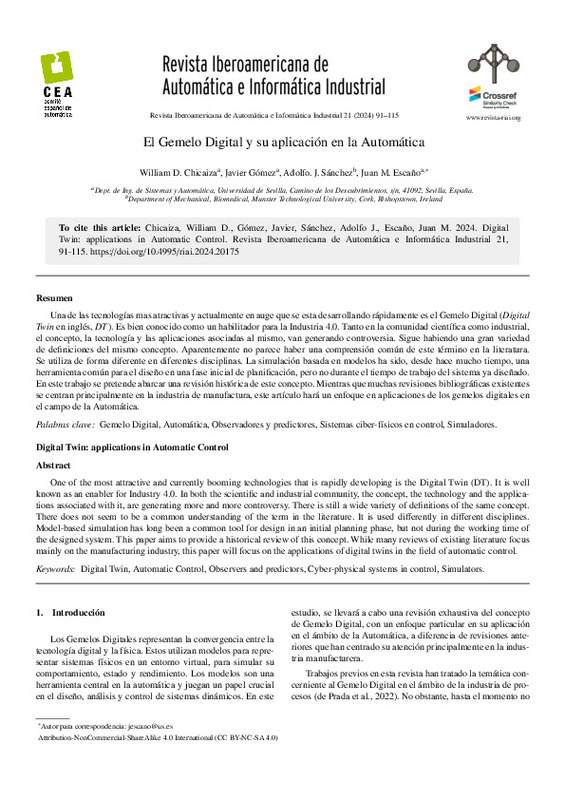JavaScript is disabled for your browser. Some features of this site may not work without it.
Buscar en RiuNet
Listar
Mi cuenta
Estadísticas
Ayuda RiuNet
Admin. UPV
El Gemelo Digital y su aplicación en la Automática
Mostrar el registro completo del ítem
Chicaiza, WD.; Gómez, J.; Sánchez, AJ.; Escaño, JM. (2024). El Gemelo Digital y su aplicación en la Automática. Revista Iberoamericana de Automática e Informática industrial. 21(2):91-115. https://doi.org/10.4995/riai.2024.20175
Por favor, use este identificador para citar o enlazar este ítem: http://hdl.handle.net/10251/203590
Ficheros en el ítem
Metadatos del ítem
| Título: | El Gemelo Digital y su aplicación en la Automática | |
| Otro titulo: |
|
|
| Autor: | Sánchez, Adolfo J. | |
| Fecha difusión: |
|
|
| Resumen: |
[EN] One of the most attractive and currently booming technologies that is rapidly developing is the Digital Twin (DT). It is wellknown as an enabler for Industry 4.0. In both the scientific and industrial community, the ...[+]
[ES] Una de las tecnologías mas atractivas y actualmente en auge que se esta desarrollando rápidamente es el Gemelo Digital (DigitalTwinen inglés,DT). Es bien conocido como un habilitador para la Industria 4.0. Tanto en ...[+]
|
|
| Palabras clave: |
|
|
| Derechos de uso: | Reconocimiento - No comercial - Compartir igual (by-nc-sa) | |
| Fuente: |
|
|
| DOI: |
|
|
| Editorial: |
|
|
| Versión del editor: | https://doi.org/10.4995/riai.2024.20175 | |
| Código del Proyecto: |
|
|
| Agradecimientos: |
The authors thanks to the European Commission for funding this work under project DENiM. This project has received
funding from the European Union’s Horizon 2020 research and innovation programme under grant agreement No 958339.[+]
|
|
| Tipo: |
|









